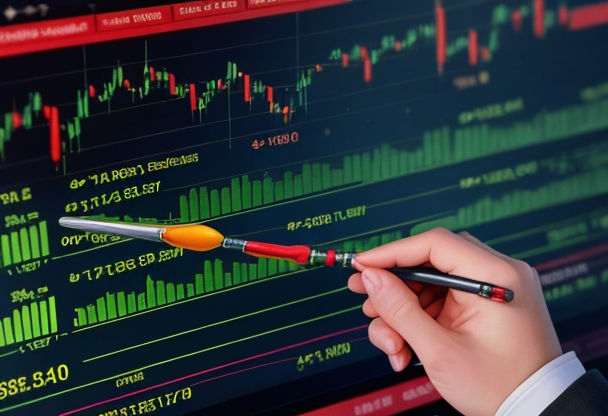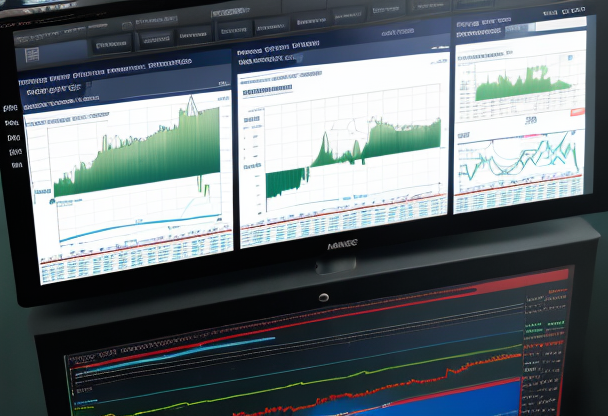Navigating the complex realm of trading strategy is a challenge embraced by traders of all levels. Crafting a plan that aligns goals, risk tolerance, and precise entry/exit methods is crucial. Explore invaluable insights to forge a winning path in the dynamic world of trading.
Introduction
Developing a trading strategy can be a challenging task for novice and experienced traders alike. It involves the creation of a plan that outlines the trader’s goals, risk tolerance, and methods for entering and exiting trades. The importance of a well-thought-out trading strategy cannot be understated in a market where volatility and uncertainty are the norm. Successful traders often spend significant amounts of time analyzing market trends and developing a strategy that is tailored to their individual trading style. In this article, we will explore some tips and tricks that can help traders develop a winning trading strategy and increase their chances of success in the competitive world of trading.
Explanation of Trading Strategy
A trading strategy is a set of rules or guidelines that traders follow in making decisions about buying and selling financial assets. Trading strategies may vary depending on the market and the goals of the trader. Some popular trading strategies include trend following, mean reversion, and momentum trading. Trend-following strategies involve identifying market trends and following them, while mean reversion strategies involve buying assets that are undervalued and selling assets that are overvalued. Momentum trading strategies involve buying assets that are moving upward in price and selling assets that are moving downward in price. Successful trading requires a solid trading strategy that is based on careful analysis and testing.
Importance of Developing a Trading Strategy
In conclusion, a trading strategy is a key component of a successful trading career. It helps traders to maintain discipline, reduce emotional biases and make informed decisions about trades. A well-designed trading strategy can increase profitability and reduce losses, thereby increasing the trader’s overall success in the market. Developing a trading strategy is not a one-time process; it involves continuous monitoring, adjustments, and optimization to suit changing market conditions. Traders should strive to be flexible, open to new ideas, and willing to learn and adapt as they gain more experience in trading. Ultimately, the ability to execute a well-crafted trading strategy will be the difference between success and failure in the markets.
Purpose of the article
The purpose of this article is to provide readers with a comprehensive understanding of how to develop a successful trading strategy. Through defining important terms, discussing the significance of research and analysis, and exploring common mistakes made by novice traders, readers will gain valuable insights on how to avoid pitfalls and make informed decisions when investing in the market. By emphasizing the importance of discipline, risk management, and continuous learning, this article will equip readers with the tools necessary to develop and refine their own trading strategy, ultimately leading to increased profitability and success in the world of trading.
Furthermore, consistently monitoring and evaluating the trading strategy is crucial for success. One approach is to keep a trading journal, recording daily trades and assessments of the rationale behind them. Analyzing the journal entries over time can reveal patterns and areas for improvement. Additionally, using backtesting platforms to test the effectiveness of the strategy on historical data can provide insight into potential future performance. It is also important to stay up-to-date on market trends and news that may impact the strategy, and be willing to make adjustments as necessary. By continuously evaluating and adapting the trading strategy, success can be achieved in the dynamic and ever-changing world of trading.
Understanding the Market
Furthermore, understanding the market requires a deep knowledge of the industry trends, market indicators, and consumer behavior. An in-depth analysis of such factors can help traders to make informed decisions regarding their investments when the market is relatively stable or experiencing volatility.
Trading strategies should be custom-made to fit the uniqueness of the market. Flexibility is key when developing a trading strategy, as the market is prone to sudden changes, and a good trader must be able to pivot and recalibrate accordingly. Developing a robust trading strategy takes time, patience, and discipline, but with the right skills and tools, traders can optimize their investments and reap the benefits of the market.
Researching Different Markets
When researching different markets, it is important to consider various factors, including a market’s volatility, liquidity, and potential for growth. Conducting thorough research before investing can help traders make informed decisions and avoid costly mistakes. Some key sources for market research include financial news websites, industry publications, and government reports. Additionally, it can be helpful to analyze historical data and market trends to gain insight into a market’s past performance and potential for future growth. By taking a comprehensive approach to market research, traders can identify potentially lucrative investment opportunities and make informed decisions that are more likely to lead to success.
Identifying Trends and Patterns
Another important aspect of developing a successful trading strategy is identifying trends and patterns. There are several tools that can assist traders in this process, such as technical indicators and chart patterns. Technical analysis can provide insights into past price movements and predict future price trends. Fundamental analysis can offer information about economic news, geopolitical events, and other factors that can impact market trends. Identifying patterns in market data can help traders understand the behavior of specific securities and make informed trading decisions. However, it is important to note that trends and patterns are not always predictable and can change rapidly, so traders must be prepared to adapt their strategies accordingly.
Analyzing Market Data
Analyzing market data is a crucial step in developing a successful trading strategy. It involves gathering and examining data on the market’s trends, including price movements, trading volumes, and the overall state of the economy. Market analysis can be done through the use of various tools such as technical analysis and fundamental analysis. Technical analysis involves examining charts and trends, while fundamental analysis focuses on economic indicators that may affect the market’s trend. In addition to these tools, traders also need to keep an eye on news and events that may impact the market. Accurate market analysis can help traders make informed decisions and increase their chances of success in trading.
In order to develop a successful trading strategy, it is important to have a clear understanding of both technical and fundamental analysis. Technical analysis involves the use of charts and indicators to identify trends and make predictions about future market movements. Fundamental analysis, on the other hand, involves the evaluation of economic and financial factors that may impact the value of an asset. By combining these two approaches, traders can gain a more complete understanding of the market and make more informed decisions about when and how to trade. Additionally, it is important to continuously monitor and adjust the strategy as market conditions change over time.
Setting Realistic Goals
Setting realistic goals is key to achieving success in many areas, including trading. Goals should be specific, measurable, attainable, relevant, and time-bound (SMART). A trader’s goals should be grounded in research, analysis, and a solid understanding of the markets. Additionally, it’s important to be realistic about the results that can be achieved within a given timeframe. A trader should set both short-term and long-term goals and regularly evaluate their progress to make necessary adjustments. Ultimately, setting realistic goals helps keep a trader focused and motivated, and can lead to greater profitability and success over time.
Importance of Setting Goals
In conclusion, setting goals is critical to success in trading. Without well-defined and attainable goals, traders are more likely to become overwhelmed or make impulsive decisions. Effective goal setting involves considering the bigger picture and breaking down long-term objectives into smaller, actionable steps. Goals should be specific, measurable, realistic, and time-bound. Additionally, traders should regularly review and adjust their goals as they progress. By setting and striving towards meaningful goals, traders can ensure they remain focused, motivated, and disciplined, ultimately increasing their chances of success in the competitive world of trading.
Making Achievable Goals
Making achievable goals is a crucial step in developing a trading strategy. Many traders fail because they set unrealistic expectations for their trades and investments. It is important to identify precise and measurable short- and long-term goals that align with your overall trading objectives. These goals should be based on your trading experience, available resources, and market conditions. Achievable goals help you make rational decisions, avoid impulsive trades, and maintain discipline and focus. Successful traders know that achieving small, incremental goals over time is more effective than aiming for big wins that may not materialize. When setting goals, it is also important to regularly review and adjust them to reflect changes in the market and your trading capabilities.
Long-term and Short-term Goals
When developing a trading strategy, it is imperative to set both long-term and short-term goals. Long-term goals may include things such as overall profitability or reaching a certain level of expertise in a particular area of trading. Short-term goals, on the other hand, may be more specific and focused, such as making a certain number of successful trades in a day or week. Setting these goals can help traders focus their efforts and remain motivated, as they are working towards something tangible. It is important to reassess and adjust these goals periodically to ensure that they remain relevant and achievable.

In order to achieve success in trading, it is crucial to have a solid and well-developed trading strategy. A trading strategy is a plan of action that helps traders to achieve their financial goals by identifying and executing profitable trades. A good trading strategy should take into account the trader’s risk tolerance, financial goals, and market conditions. It must also include a robust risk management plan that takes into account the maximum amount of money that can be lost on any given trade. A well-developed trading strategy is a map that guides traders through the turbulent and unpredictable world of trading, allowing them to make informed decisions and maximize their profits.
Risk Management
One key element of a successful trading strategy is effective risk management. Risk management involves a variety of techniques to minimize the potential loss of capital. It is important to identify the maximum amount of risk that you are willing to take with each trade. Additionally, stop-loss orders can be used to automatically close a trade if it reaches a certain level of loss. It is also essential to diversify your portfolio so that all of your investments are not tied to a single asset or market. Finally, monitoring market conditions and adjusting your strategy as needed can help prevent significant losses.
Understanding the Concept of Risk
Understanding the concept of risk is essential for any successful trader. Risk refers to the possibility of loss or danger, and in trading, it relates to the chance that an investment will decrease in value, resulting in a financial loss. Traders must be aware of both the likelihood and severity of potential risks associated with their investments. They must also understand that risk cannot be entirely eliminated, but it can be managed through diversification, proper position sizing, and the use of stop-loss orders. By balancing risk and reward, traders can increase their chances of long-term profitability.
Identifying and Managing Potential Risks
Identifying and managing potential risks is crucial for any trading strategy. It is important to acknowledge that trading always carries some level of risk, and therefore traders must identify potential risks and take appropriate measures to manage them. Some common risks include market volatility, economic uncertainty, and technical issues. Traders must also consider their personal risk tolerance and financial goals when developing a risk management plan. Some common risk management strategies include diversification, setting stop-loss orders, and using hedging techniques. By identifying and managing potential risks, traders can increase the likelihood of success in their trading strategies.

Using Stop-Loss Orders
Using stop-loss orders can help traders limit their losses and protect their investments. A stop-loss order is an instruction given to a broker to sell a security once it hits a predetermined price level. This level is set by the trader to minimize the potential loss in case the market moves against them. Stop-loss orders help traders avoid emotional decision-making and prevent them from losing more than they can afford. It is essential to set stop-loss orders at a level that allows for normal market volatility without being too close to the current price. Additionally, traders should be aware of the potential for price gaps and slippage when using stop-loss orders.
One of the most important aspects of developing a successful trading strategy is to have a clear understanding of your risk tolerance. This means that you should have a realistic idea of how much money you are willing to risk on each trade and how much you are willing to lose before you cut your losses. It is also important to have a clear plan for how you will manage your trades, including how you will take profits and how you will adjust your trades if the market moves against you. By taking the time to develop a solid trading plan and sticking to it, you can increase your chances of success and minimize your risks.
Technical and Fundamental Analysis
Technical and fundamental analysis are two main forms of analyzing financial markets. Technical analysis involves examining charts and indicators to understand market trends and patterns. These traders believe that the price movements of an asset will provide insights into future performance. Fundamental analysis, on the other hand, involves analyzing economic and financial data to estimate the intrinsic value of an asset. It aims to identify the underlying factors that influence an asset’s price, such as industry trends, economic data, and news events. Both technical and fundamental analysis are essential tools for traders looking to develop a robust trading strategy. By understanding both types of analysis, traders can identify new opportunities and make informed decisions about when and how to enter or exit trades.
Definition of Technical and Fundamental Analysis
Technical and fundamental analyses are the two primary methods that traders use to evaluate securities and make investment decisions. Technical analysis refers to analyzing charts and using technical indicators to identify patterns and trends in price movements. This approach assumes that the market’s price action is predictive of future movements. Fundamental analysis, on the other hand, involves examining a company’s financial and economic data, market conditions, and industry trends to determine a security’s intrinsic value. Fundamental analysts believe that the stock market may not always accurately reflect a company’s true value and therefore rely on more detailed information to make their investment decisions.
Importance of Analyzing the Market
In order to create an effective trading strategy, it is crucial to analyze the market. This process involves studying various factors that impact the market, such as supply and demand, economic indicators, geopolitical events, and trends in the industry. By understanding the market, traders can make informed decisions and allocate their resources wisely. It is also important to keep in mind that market conditions can change rapidly, and regular analysis is necessary to stay ahead of the curve. Failure to analyze the market can result in missed opportunities or losses, which can be detrimental to a trader’s success. Therefore, analyzing the market is a critical component of developing a trading strategy.
Use of Technical Analysis in Developing a Trading Strategy
Technical analysis is a fundamental aspect of developing an effective trading strategy. It focuses on studying market data and identifying patterns and trends that can be used to predict future price movements. Technical analysis relies on charts, graphs, and other visual aids to help traders identify key levels of support and resistance, as well as other important patterns that can provide valuable insights into market trends. By using technical analysis to identify potential market opportunities, traders can develop profitable trading strategies that capitalize on current market conditions and trends. This can be particularly effective for short-term trading, where quick and decisive actions can make all the difference.
It’s important to have realistic expectations when developing a trading strategy. It’s highly unlikely that any strategy will yield consistent profits without any losses or drawdowns. Recognizing this and managing risk accordingly is key. Traders must have a solid understanding of their own risk tolerance and ensure that their strategy aligns with it. Additionally, it’s crucial to monitor market conditions and adjust the strategy as necessary. Markets are dynamic and constantly changing, and a successful strategy today may not be as effective tomorrow. Consistently evaluating and adjusting the strategy can increase the likelihood of sustained success.
Choosing Trading Instruments
When choosing which trading instruments to trade, it is important to consider your personal preferences, risk tolerance, and time horizon. Some traders prefer to focus on just a few assets or markets, while others may prefer to diversify their portfolio across multiple markets and instruments. It is also important to consider the liquidity and volatility of the instruments you are considering trading, as this can impact trading strategies and risk management. Additionally, some instruments may require specialized knowledge or technical expertise, so it is important to do your research and consider your level of expertise before trading certain instruments. Ultimately, the key is to find a selection of instruments that aligns with your individual trading goals, objectives, and risk tolerance.
Explanation of Different Trading Instruments
Trading instruments refer to the financial products that can be bought and sold on the market. Some of the commonly traded instruments include stocks, bonds, currencies, commodities, and options. Stocks are ownership shares in a company, while bonds represent debt issued by companies and governments. Currencies allow traders to capitalize on the fluctuations in exchange rates between two countries. Commodities refer to natural resources such as oil, gold, and silver. Options give investors the right to buy or sell an underlying asset at a predetermined price and time. Understanding the characteristics and risks associated with each trading instrument is essential to developing a successful trading strategy.

Identifying the Right Instrument for Your Trading Strategy
Identifying the right instrument for you is crucial to the success of your trading strategy. While it might be tempting to jump into trading every instrument available, it’s important to remember that different instruments behave differently, and will require different strategies to be successful. When deciding on an instrument to trade, consider your trading style, risk tolerance, and previous experience. Are you looking for fast-paced, high-risk opportunities, or lower-risk, slower-paced options? Do you have experience with particular instruments, or are you willing to try something new? By taking the time to identify the right instrument for you, you’ll increase your chances of success and avoid unnecessary risk and frustration.
Risks and Advantages of Different Instruments
One crucial aspect of developing a trading strategy is understanding the risks and advantages of different instruments. Some instruments, such as options and futures, can provide significant leverage, allowing traders to make substantial profits with relatively small investments. However, these instruments also carry a high degree of risk and can result in significant losses if not used correctly. On the other hand, bonds and mutual funds may be less volatile but offer lower potential returns. It’s essential to carefully evaluate each instrument’s characteristics and risk profile before deciding to include it in your trading strategy. Ultimately, diversification is crucial to mitigate risks and maximize the benefits of different trading instruments.
Another important aspect of developing a trading strategy is to manage risk effectively. Risk management is crucial to a successful trading career. It involves identifying potential risks and taking steps to minimize those risks. Some common risk management strategies include using stop-loss orders, diversifying investments, and setting realistic profit targets. It is also important to maintain discipline and avoid emotional decision-making. While trading can be exciting and thrilling, it is crucial to keep a level head and stick to the plan. By managing risk effectively, traders can not only minimize potential losses but also increase the likelihood of sustained profitability.
Backtesting and Optimization Trading Strategy
The process of backtesting a trading strategy involves evaluating the performance of the strategy on historical data to determine its effectiveness and identify areas for improvement. This can be done using various software tools that allow traders to simulate the execution of trades based on a set of predetermined rules. Once backtesting is complete, optimization can be used to fine-tune the strategy by adjusting the parameters to maximize its profitability. While backtesting and optimization can be helpful in developing a profitable trading strategy, it is important to remember that past performance is not a guarantee of future results and that unexpected market conditions can still lead to losses.
Importance of Backtesting and Optimization
One of the most crucial steps in developing a trading strategy is backtesting and optimization. Backtesting involves testing a trading strategy on historical data to assess its performance. This helps traders identify flaws and refine their strategy. Optimization, on the other hand, involves tweaking the strategy to improve its overall performance. Both backtesting and optimization help traders avoid common mistakes, such as overfitting the strategy to the data, and increasing the likelihood of success in live trading. It is important for traders to understand that backtesting and optimization are ongoing processes that should be regularly conducted to ensure the strategy remains effective in changing market conditions.
Explanation of the Process
Developing a trading strategy can be a complex and multifaceted process, with many different factors and variables to consider. At its most basic level, however, the process generally involves three key steps: first, identifying your goals and objectives, and determining the types of financial instruments and markets that can help you achieve them. Second, conducting extensive research and analysis to identify potential trading opportunities, and assessing the risk associated with each potential trade. Finally, implementing your chosen strategy, and monitoring your trades closely to identify any issues or problems that may arise. Throughout the process, it is crucial to remain disciplined and objective, and to adapt your strategy as the market and your own circumstances change over time.
Tips for Efficient Backtesting
Backtesting is a critical component of creating an effective trading strategy, but it can be time-consuming and resource-intensive. To optimize the process, there are several tips that traders should keep in mind. Firstly, leverage data mining tools to identify relevant historical data sets. Secondly, refine the parameters of your strategy to reduce the number of false signals. Thirdly, avoid introducing bias into your testing by randomizing order dates. Fourthly, consider testing your strategy on out-of-sample data to confirm its robustness. Finally, automate the backtesting process to increase efficiency and reduce the likelihood of errors. By following these guidelines, traders can streamline their backtesting and achieve more accurate results.
Another important factor to consider when developing a trading strategy is risk management. No matter how skilled a trader may be, there is always the chance of losing money. Therefore, it is crucial to implement risk management techniques to minimize potential losses. This can be done through setting stop-loss orders, diversifying investments, and maintaining a healthy risk-to-reward ratio. Additionally, traders should have a solid understanding of their risk tolerance and only take on positions that align with their comfort level. By implementing effective risk management strategies, traders can minimize potential losses and maximize profits in the long run.
Trading Psychology
Trading psychology is a crucial aspect of any successful trading strategy. Successful traders must have a firm understanding of their own emotions and biases, as well as the ability to manage and control them. This requires maintaining a level head during both profitable and losing trades, avoiding impulsive decisions, and having the discipline to stick to a well-defined trading plan. Additionally, traders must be able to manage the psychological stress that comes with trading, such as the fear of missing out or the fear of losing money, by maintaining a balanced approach to decision-making and keeping their emotions in check. By mastering the psychology of trading, traders can increase their chances of success in the long run.
Importance of Having the Right Mindset
Having the right mindset is crucial when it comes to successful trading. Fear and greed can cloud decision-making, causing traders to make impulsive and costly moves. A successful trader must maintain a disciplined approach, focusing on the long-term goal rather than short-term gains. This means managing emotions, being patient, and sticking to a defined strategy. A positive mindset leads to a more productive and successful trading experience as it allows for constructive problem-solving instead of frustration or defeat. Psychological preparedness is just as important as technical analysis in trading, and develops through practice and experience.
Controlling Emotions
Controlling emotions is vital for successful trading. It is easy to get swept up in the excitement of a bull market and make impulsive trades. On the other hand, a bear market can trigger panic and fear leading to hasty decisions. Emotional trading leads to poor decision-making and can result in significant financial losses. Traders should develop a mindset that can remain calm and rational even in the most volatile of markets. Emotions such as greed, fear, and hope should be set aside, and the focus should be on implementing a solid strategy. This requires discipline, patience, and a strong understanding of market dynamics.

Staying Disciplined
Staying disciplined is a critical component of developing a successful trading strategy. Discipline requires consistency, patience, and focus, as well as the ability to stick to a plan even in times of uncertainty or temptation. Successful traders recognize that discipline is not only necessary for making sound decisions in the market, but also for developing the resilience and persistence needed to navigate the inevitable ups and downs of trading. To stay disciplined, traders should establish clear entry and exit points, maintain strict risk management practices, and avoid emotional trading decisions. Ultimately, discipline is the key to implementing a trading strategy that delivers consistent profits over the long term.
Another important aspect to consider when developing a trading strategy is risk management. Trading involves risks and losses are inevitable. Therefore, it is crucial to determine your risk tolerance and establish a plan to mitigate potential losses. This may involve setting stop-loss orders, diversifying your portfolio, creating a maximum drawdown limit, and taking profits when possible. Risk management should be an ongoing process that is regularly reviewed and adjusted as needed. By effectively managing risks, traders can limit their downside while maximizing their potential for profits.
Conclusion
In conclusion, developing a trading strategy requires time, effort, and dedication. It is important to remember that there is no one-size-fits-all approach, and different strategies may work better for different traders. Conducting thorough research and analysis, setting realistic goals, and managing risk are all critical components of a successful strategy. Consistency and discipline are also key factors in achieving long-term profitability. While there may be many obstacles and challenges along the way, the rewards of a well-executed trading strategy can be substantial. With persistence, determination, and a willingness to learn and adapt, any trader can develop a winning strategy and achieve success in the markets.
Recap of the Main Points
In this article, we discussed the important aspects of developing a trading strategy to achieve successful outcomes. After establishing a clear understanding of the markets and available trading tools, traders should identify their financial goals and risk tolerance levels. Next, traders should focus on creating a clear plan that includes entry and exit points, stop-loss orders, and position-sizing strategies. It is also important for traders to continuously monitor and adjust their strategies and be disciplined in following them. Lastly, traders should maintain a focus on long-term success and avoid impulsive decision-making. By following these tips and tricks, traders can improve their chances of success in the highly competitive world of trading.
Final Thoughts and Advice on Developing a Trading Strategy
In conclusion, developing a trading strategy is an essential component of successful trading. It involves assessing your own financial goals and risk appetite, analyzing market trends and indicators, and determining a clear entry and exit plan. While there is no one-size-fits-all approach to trading strategy, keeping abreast of the latest news and events impacting global markets is crucial. It’s also important to be disciplined and patient, as the markets can be unpredictable and volatile. Finally, seeking the advice and guidance of experienced traders and financial professionals can help you refine your approach and minimize risk. By following these tips and tricks, you can develop a trading strategy that works for you and achieves your financial goals.
Future Trends in Trading Strategy Development
Future trends in trading strategy development will likely involve the increasing use of machine learning and artificial intelligence. Machine learning algorithms can analyze large amounts of financial data and identify patterns and trends that humans may miss. These technologies can also be used to create predictive models that can forecast future market behavior. In addition, social media analysis may become an increasingly important tool for traders, as it can provide insight into public sentiment and potential market movements. Finally, blockchain technology may also play a role in trading strategy development, potentially enabling faster and more secure transactions. As technology continues to evolve, traders must adapt and embrace new tools and techniques to remain competitive.




Leave a Reply